A word before we begin…
It is my long-standing practice to refrain from showing any kind of graphic or potentially disturbing images on my true crime blog. However, since this crime story captured the world’s attention first through pictures, I do not believe it can be told without using any of the photos associated with the torture at the Abu Ghraib prison. Indeed, these crimes would likely never have come to light nor any of the perpetrators brought to justice were it not for one heroic soldier who found and released the images.
That being said, I will do my best to be sensitive to both you the reader and the victims by staying away from the worst of the images, though they are perhaps worth seeing once to fully understand the horrific nature of what was perpetrated. So while none of the images I’ve included are what I would consider to be “graphic,” before you read further, consider whether you wish to encounter images that you might still find upsetting.
Background
On September 11, 2001, radical Islamic terrorists affiliated with the global terrorist organization Al-Qaeda under the leadership of Osama bin Laden carried out the deadliest terror attack in human history. Nineteen hijackers took control of four commercial airliners and flew them into civilian and military targets on United States soil. The 1st two attacks were against the World Trade Center towers in New York City. The 3rd plane flew into the Pentagon, and the 4th crashed in a field near Shanksville, Pennsylvania after its passengers rushed the terrorists in an attempt to regain control of the plane. Its likely target was the United States Capitol building. Together, the attacks claimed 2977 innocent lives.

In response to 9-11, on September 16th President George W. Bush declared “war on terror” to preemptively take the fight to the terrorists before they could carry out further attacks on U.S. soil, and to bring those responsible to justice. Ten days later, Operation Enduring Freedom commenced to fight jihadists in Afghanistan and Pakistan.
In January of 2002, during his State of the Union Address, President Bush called out “state sponsors of terrorism” — rogue nations that harbored and facilitated terrorist organizations. It was believed that these nations also possessed “weapons of mass destruction.” One of these nations was Iraq under the Socialist dictator Saddam Hussein, who was known to possess and use chemical weapons. Due to Iraq’s friendly position towards radical Islamic terrorists and fearing chemical weapons would fall into the hands of Al-Qaeda, the United States called for the disarmament of Saddam’s regime.
2003 Iraqi Invasion
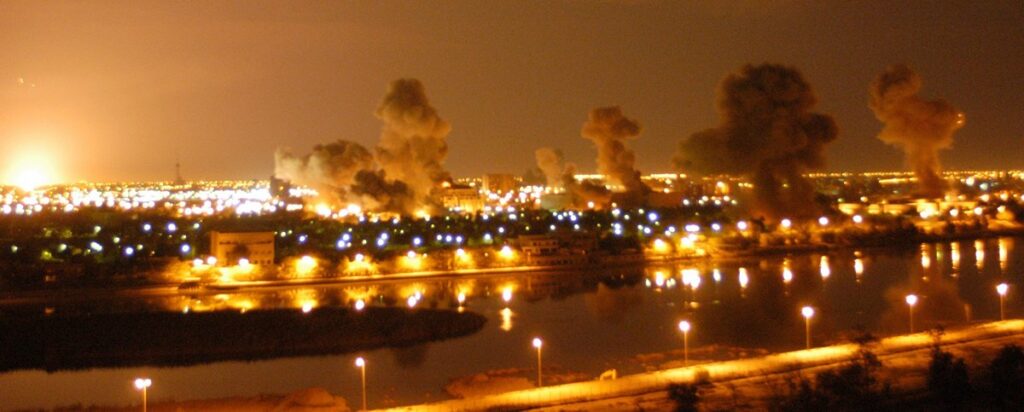
After Saddam refused to cooperate with United Nations demands, in October of 2002, the United States Congress approved the use of military force against Iraq. Finally on March 17, 2003, President Bush ordered Saddam Hussein and his two sons to depart Iraq within 48 hours or face military invasion. When Bush’s deadline passed without Saddam’s departure, the US launched its invasion of Iraq. In less than two months, the capital city of Baghdad had fallen, and Bush declared major combat operations complete.
However, the fall of Saddam’s regime led to the destabilizing of Iraq, resulting in an insurgency from Al-Qaeda affiliated terrorist groups. As the counterinsurgency ramped up, there became a pressing need to “house” the Al-Qaeda detainees.
Abu Ghraib Prison
Prison Crisis
Under Saddam Hussein’s regime, Abu Ghraib Prison had been notorious for housing — and mass executing — Saddam’s political opponents. In the height of the post-Saddam insurgency, U.S. forces answered the need for a detainment facility by reopening Abu Ghraib on August 4, 2003. By March 2004, the prison population had ballooned to nearly 7,500 detainees. These detainees spanned five different security levels with Tier 1 prisoners being either confirmed terrorists or those suspected of possessing critical, time sensitive intelligence information. Other security levels contained both women and children.

Detaining that many prisoners became both a manning crisis and a security issue. In addition to being a prison, Abu Ghraib also served as a forward operating base, which meant that the prison was constantly under attack. Abu Ghraib was the only military prison during the war that suffered casualties of detainees due to insurgent attacks.
Torture on the Night Shift
Help Wanted
The Tier 1 section of the prison housed the most violent of the detainees, as well as high-value prisoners suspected of terrorism or those suspected of possessing time-sensitive information about upcoming terrorist attacks. Initially these prisoners were under the supervision of the CIA who carried out round-the-clock interrogations in concert with private military contractors. As the prison population swelled, the task of both guarding and interrogating the prisoners exceeded the capacity of the CIA, and they petitioned for assistance from the Army. Military intelligence joined the interrogations, but still there was need for more assistance.
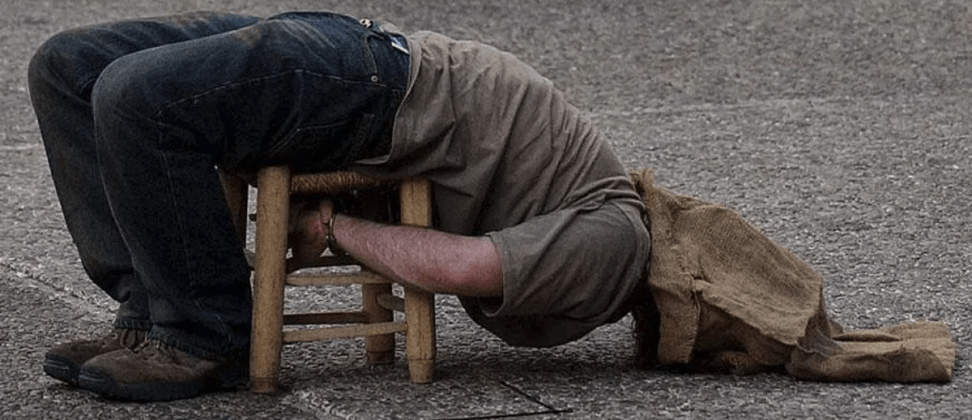
Brought in to supply this need was an Army Reservist unit: the 372nd Military Police Company led by Brigadier General Janis Karpinski. Though they were MP’s, their training and experience was in infantry deployment and supply line security — not in prison operations or detainee handling. They were nonetheless tasked with maintaining order among prisoners who were prone to hunger strikes, riots, and other violence. Their lack of training would be a key factor in the abuses that followed.
Sleep Deprived
Though the interrogations were still conducted by intelligence officers, the members of the 372nd were instructed to “soften up” the detainees to make them more compliant during the interrogations. The main tactic they were told to implement was sleep deprivation. This was accomplished in a variety of ways: playing loud music; frequently moving detainees from one holding cell to another; and forcing detainees to stand for long periods of time, sometimes chained in an upright position or a “stress position” making sleep nearly impossible. Additionally, when the detainees were allowed to sleep, it was for short and unpredictable times, often only twenty minutes to two hours — a tactic designed to disorient the prisoners and instill a feeling of hopelessness.
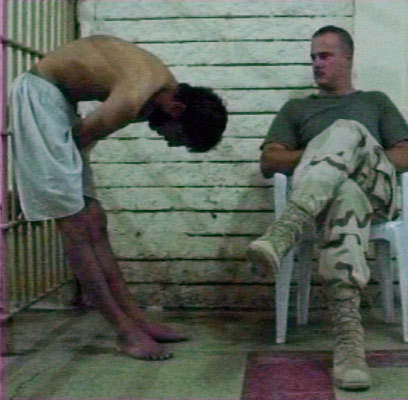
Enhanced Interrogation
Company leadership repeatedly petitioned higher-ups for guidance on what was allowable when dealing with prisoners, but answers were vague, inconsistent, and ambiguous. Yet there was intense pressure all the way from Defense Secretary Donald Rumsfeld to produce results. The lack of guidance, pressure from leadership, and the CIA insisting on pre-interrogation prep proved to be a dangerous concoction.
Already there had been a handful of suspicious deaths at the hands of the CIA interrogators due to their use of the controversially named “enhanced interrogation methods.” In addition to sleep deprivation and stress positions, detainees were subjected to beatings, starvation, forced nudity, being doused with water, playing on a detainee’s fears, sexual humiliation, extreme cold, and most famously: waterboarding, a technique that gave the subject the feeling of being drowned. Many of these techniques, while not explicitly condoned for use by the 372nd, were nonetheless adopted — all in the name of maintaining prison order and softening up the detainees for interrogation.

The Pictures
First Rumors
In late 2002 and throughout 2003, various reports and rumors began to trickle out about abuses and even torture being perpetrated at the Abu Ghraib Prison (as well as at other prisons such as the Bagram Detention Facility and Guantanamo Bay), but these were largely ignored or downplayed by military leadership. And in response to the question of detainees being forced to stand upright for more than four hours, Defense Secretary Rumsfeld famously countered that he was often on his feet eight to ten hours a day. President Bush championed the results and opined the ambiguity of how torture was defined.

The Hero

In January 2004, Staff Sergeant Joseph Darby approached a fellow solider, Charles Graner, to ask about sightseeing pictures of their trip. Darby had not been assigned to the Tier 1 prison blocks and had no knowledge of the abuses that were being perpetrated. Graner gave his camera and other media drives to Darby so he could go through and select the pictures he wanted. Unintentionally included were over 280 images depicting degrading acts and torture by soldiers from the Tier 1 night shift, as well as several videos. There were also pictures of dead detainees — some posed alongside smiling soldiers. Eventually over 1300 images and nearly 100 videos depicting detainee abuse would be discovered, most of which were never released.
For the next three weeks, Sergeant Darby agonized over what to do with the monstrous discovery. He faced a serious threat of retaliatory harm if he blew the whistle on his fellow soldiers. Finally, Darby decided to anonymously report his findings to the Army’s Criminal Investigative Division. He walked into the CID office, handed them two CD’s, simply stating that they’d want to see their contents, and then left without giving his name. Within 45 minutes they had tracked Darby down and returned him to their office.

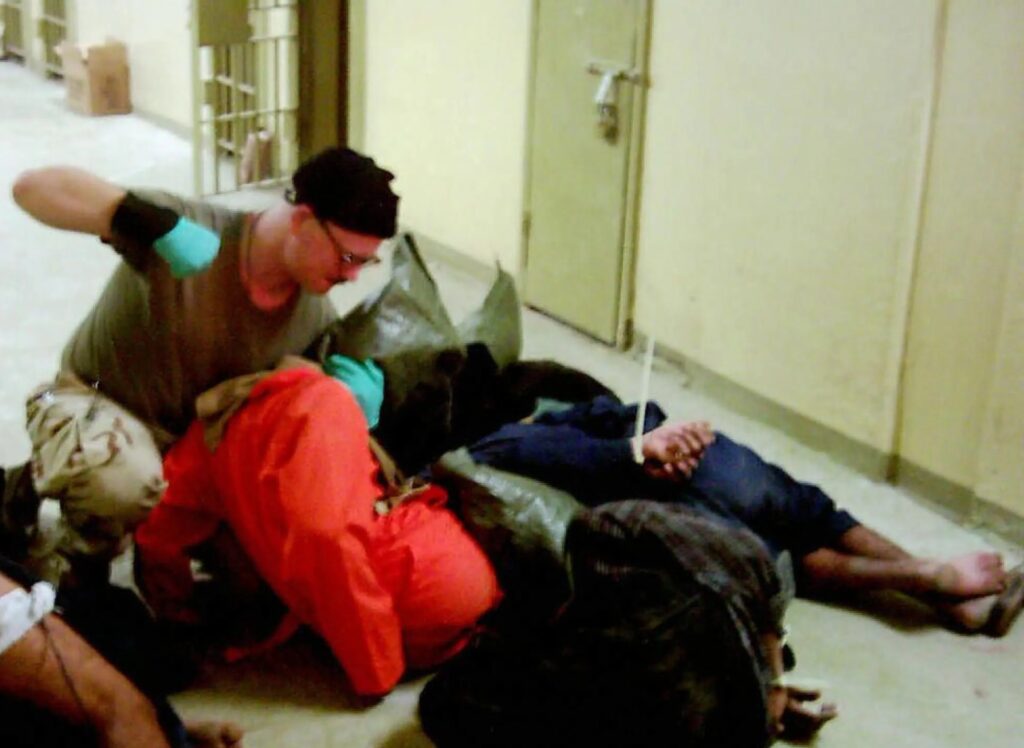

Investigation
Lieutenant General Ricardo Sanchez, the senior officer in Iraq, ordered an investigation into the actions of the 372nd MP Company. The investigation was handled by Major General Antonio Taguba who found that “numerous incidents of systemic sadistic, blatant, and wanton illegal abuse of detainees were intentionally perpetrated by several members of the military police guard force.”
The following severe abuses were documented:
- Punching, slapping, and kicking
- Stomping on detainees’ bare feet
- Photographing nude male and female detainees
- Arranging detainees in sexual positions
- Forced nakedness for multiple days in a row
- Forcing male detainees to wear female underwear, including on their heads
- Forced sex acts
- Simulated electrocution
- Forcing detainees to wear a dog collar and leash while being paraded naked
- Using military dogs to frighten and bite detainees
- Threatening detainees with loaded weapons
General Taguba submitted his report and General Karpinski was quickly revealed of her duty. By late February, 17 additional soldiers had been suspended.
Breaking News
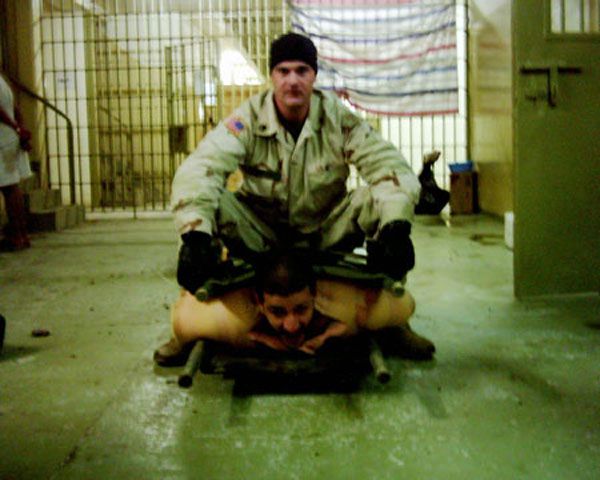
On February 23, 2004, CNN learned of the investigation, but did not report it. However, on April 9th at a pre-trial hearing for Staff Sergeant Ivan Frederick, one of the accused soldiers, the news of the abuses becomes public. By the end of the month, CBS had obtained photos of the abuses and intended to air them during a “60 Minutes” segment. The Defense Department tried to get “60 Minutes” to delay their report, but when CBS learned The New Yorker intended to publish the photos on April 30th, “60 Minutes” went ahead as planned for the 28th.
Deaths
Additional investigations revealed that a total of 105 prisoners died while in US custody in Iraq. Sixty-three of them were at Abu Ghraib.
- 41 were due to insurgent attacks upon the prison.
- 8 were ruled “unknown.”
- 4 were ruled accidental.
- 37 were ruled as homicide.
- 20 were ruled of natural causes.*
Of the 37 ruled “homicide,” 22 were by gunshot wound, 7 were by blunt force trauma or asphyxiation, and 8 were simply listed as “other.” It’s since been proven that when a detainee would die during CIA interrogations, it was common practice to write their death off as “natural causes,” likely pushing the homicide rate even higher. Additionally, the CIA was known to operate “ghost detainees” — perhaps as many as 100 prisoners who were never officially entered into the database, some of which died during interrogation. There was at least one occasion where a detainee died during interrogation, yet was nonetheless put on a stretcher with fake IV lines to hide his murder.
Accountability
Another report completed by Major General George Fay in August 2004 highlighted 44 instances of abuse and found that a total of 27 military intelligence personnel from 205th Military Intelligence Brigade and 4 civilian contractors joined in or encouraged the abuse. Both General Fay and General Taguba recommended actions be taken against senior military leadership.
Yet in the end, very few of those involved or implicated faced any kind of serious penalties. Defense Secretary Rumsfeld offered his resignation to President Bush who rejected it, and instead praised Rumsfeld’s leadership. General Karpinski’s supervisors were cleared of any wrongdoing and subsequently promoted. The only senior leadership that faced any kind of punishment was General Kapinski who was demoted to the rank of Colonel. Additionally a Colonel and a Lieutenant Colonel received reprimands.
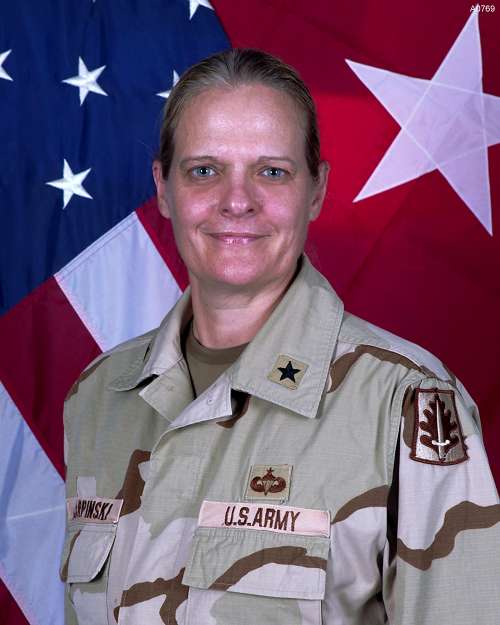
Instead, military and government leaders let the low-level soldiers appearing in the photographs take the full weight of the punishment. Eleven enlisted soldiers between the ranks of Private First Class and Staff Sergeant were convicted of crimes ranging from dereliction of duty to maltreatment of detainees and assault.
The Abu Ghraib Eleven
- Specialist Charles Graner — 10 year sentence
- Staff Sergeant Ivan “Chip” Frederick — 8 year sentence
- Private First Class Lynndie England — 3 year senence
- Specialist Jeremy Sivits — 1 year sentence
- Specialist Roman Krol — 10 month sentence
- Specialist Armin Cruz — 8 month sentence
- Sergeant Javal Davis — 6 month sentence
- Specialist Sabrina Harman — 6 month sentence
- Sergeant Michael Smith — 179 day sentence
- Sergeant Santos Cardona — 90 days hard labor
- Specialist Megan Ambuhl — no jail time due to plea agreement

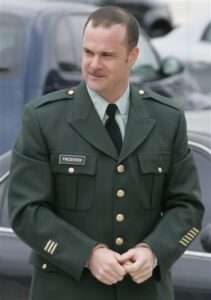


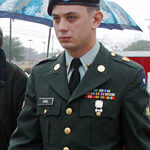

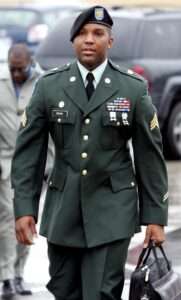


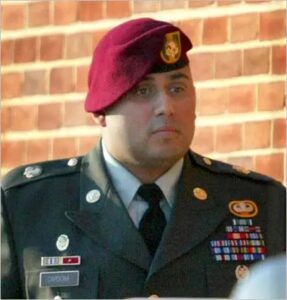

None of the CIA officers, military intelligence officers, or private defense contractors who carried out the interrogations and were responsible for multiple detainee deaths faced any repercussions.
Commercial

Hi there, quick commercial. Writing a blog post like this means hours of research and website formatting. Ultimately I’m just grateful you’re here reading my content, but if you’d like to say thanks back, you can buy me a coffee ☕It’s only $3, but it sure would mean a lot.
My Thoughts
My first reaction, from the perspective of being a United States Air Force veteran, is that I’m appalled. It’s hard to imagine fellow military members behaving in such a disgusting, inhumane, and criminal manner. SSgt. Darby is a hero, and those who were held accountable got less than what they deserved. It’s also a travesty that none of the interrogators or higher-ups who facilitated this behavior (more on that in a moment) were held accountable. The actions of the interrogators literally killed people, and whether the detainees were terrorists or not certainly does not give the CIA the right to play executioner.
An Attempt at an Explanation
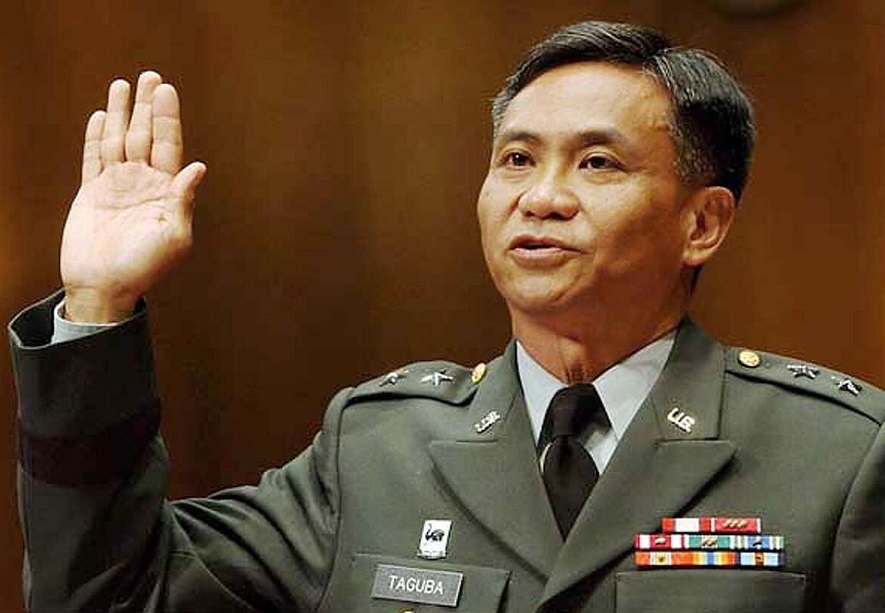
When the story broke, the senior leadership explained it away as “a few bad apples.” One General chalked it up to “Animal House on the night shift.” Basically it was swept under the rug, and those implicated were simply said to have been bad people who slipped through the recruitment process.
However, as journalists and other curious folks began to dig into the backgrounds of those who were prosecuted, what they found surprised them. They expected to find psychopathic behavior in the perpetrators prior to joining the military, but they did not. By all accounts, the Abu Ghraib Eleven had normal backgrounds. None had criminal pasts, and family and friends described them as kind, caring people and were shocked to hear what they had done. There was nothing to indicate they were “bad apples.” And what are the chances 11 “bad apples” would all end up in the same Army company and on the same shift? Yet that’s the narrative the military stuck to.
A Better Explanation
It’s almost certain that those involved in the abuses at Abu Ghriab were not “bad apples.” Rather I believe a number of inciting factors converged at Abu Ghraib that created a perfect storm ripe for abusive behavior:
- Anger over the recent 9/11 terrorist attacks that claimed nearly 3000 American lives, and a desire for retribution.
- Unclear rules of engagement. One Sergeant later reported that he was simply told: “If they look like the enemy, treat them like the enemy.”
- Lack of training. The 372nd was not trained in prison operations. They were thrown into a situation they were ill-prepared to handle.
- Under-manning, poor leadership and troop discipline.
- Dehumanizing atmosphere. The Iraqi insurgents were viewed as sub-human.
- Military camaraderie. No one (until SSgt. Darby) wanted to speak out against their fellow soldiers.
- Military culture of not questioning leadership, directives, and methods.
- Pressure from interrogators and upper-level leadership to produce results.
- Praise given when results were achieved.
- Leadership not stepping in when soldiers crossed the line, giving the impression that abuses were allowable. One of The Eleven, Specialist Ambuhl, wrote home in a letter, “This time was very confusing for me, and things were done to detainees that I questioned, but that apparently were permissible.”
- A prison riot in 2003. Military police later said the riot angered them and made them feel like they weren’t doing a good job of controlling the detainees. Abuses escalated following the riot.
- A “fog of ambiguity.” Directives from interrogators conflicted with the Army Field Manual. Multiple memorandums were passed down from leadership, often with policies added and then quickly retracted. The existence of confusing and inconsistent interrogation policies contributed to the belief that additional interrogation techniques were condoned.
- Many of the harsh interrogation tactics were actually approved in September 2003 by Lieutenant General Ricardo Sanchez, commander of the multi-national forces in Iraq.
The Torture Memo

The “Torture Memo” (officially called: Memorandum for William J. Haynes IT, General Counsel of the Department of Defense, Re: Military Interrogation of Alien Unlawful Combatants Held Outside the United States, March 14, 2003) could be it’s own whole separate discussion, but the short version is that the Bush Administration was looking for a way to get around the various international treaties that prohibited interrogation tactics that the international community generally considered to be torture. John Yoo from the Department of Justice drafted the solution: a memo to classify captured insurgents and terrorists as “unlawful combatants” rather than prisoners of war; deem oversees detention centers as falling outside the jurisdiction of American law; and devise an extremely narrow definition of torture.
Yoo advised that because Al-Qaeda was not an official military force, long-standing guidance and treaties like the Geneva Conventions did not apply to those held at Abu-Ghraib and other detention sites like Guantanamo Bay. By doing so, he suggested: “Historically, nations have been free to treat unlawful combatants as they wish. There are almost no regulatory safeguards with respect to them, and the captor owes no obligation towards them. The criminal prohibition against torture therefore would not apply to their conduct of interrogations at U.S. military bases located in a foreign state.”
And the definition of torture Yoo crafted was so absurdly narrow that as long as the person did not suffer the amputation of an extremity of their body, lose use of a bodily organ, or die, it was not torture. He further advised that “aggressive interrogation methods [can be] cruel, inhumane, and degrading — but not constitute torture.”
Finally, Yoo implicitly stated that where necessity was found for national defense, the greater good of society, or to thwart an imminent attack — then even torture itself may be permissible.
Even if an interrogation method might arguably cross the· line, we believe that under the current circumstances certain justification defenses might be available.
Clearly, any harm that might occur during an interrogation would pale to insignificance compared to the harm avoided by preventing such an attack, which could take hundreds or thousands of lives.
If hurting a detainee is the only means to prevent the death or injury of others put at risk by his actions, such torture should be permissible, and on the same basis that self-defense is permissible.
– John Yoo

It’s abundantly clear that the abuses that took place at Abu Ghraib were not only condoned from the highest levels, but actually encouraged — just nobody was supposed to find out. There’s no doubt in my mind that Rumsfeld, Yoo, and others involved in creating an atmosphere ripe for torture at Abu Ghraib should have been incarcerated right along with the Abu Ghraib Eleven, similar to the way mob bosses are imprisoned on racketeering charges for the crimes committed by their mafia organizations, even though they never pulled the trigger themselves.
Conclusion
There’s a lot more that could be said about the circumstances that facilitated the Abu Ghraib torture, but without making this blog post any longer, I simply suggest looking into two studies that were conducted in the 60’s and 70’s: the Milgram Experiment (1962) and The Stanford Prison Experiment (1971). These two controversial studies concluded that when an untrained individual is instructed by an authority figure to harm others in the name of the greater good, most people, despite their own personal misgivings and good character, will nonetheless carry out the orders and inflict pain and degrading treatment. I believe a similar “experiment” played out at Abu Ghraib.

I also write crime thrillers! Check out The Missing and The Holiday Killer
Also I’d love to hear from you. Join the discussion and drop a comment below.

Excellent post! It captivated me from start to finish. I’m always on the lookout for such informative and well-structured content.
Thank you Victor!
Simply desire to say your article is as surprising. The clearness in your post is simply excellent and i could assume you are an expert on this subject. Thanks a million and please carry on the gratifying work.
Thank you! happy reading
There is definately a lot to find out about this subject. I like all the points you made
Thank you Karissa!
Your blog post was fantastic, thanks for the great content!
Thank you Isabel!
Pingback: Conversation with a Criminal - Stephen Zimmerman